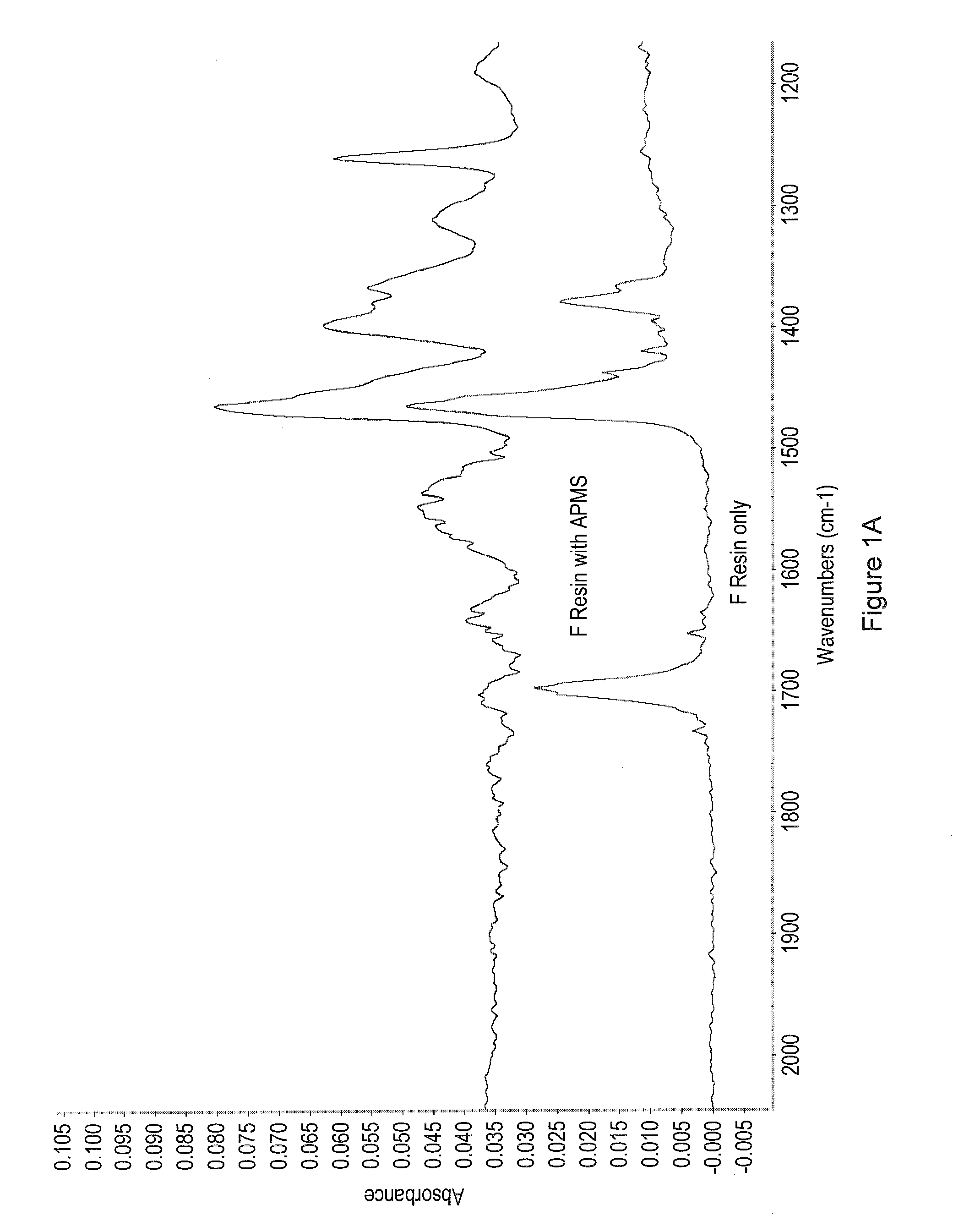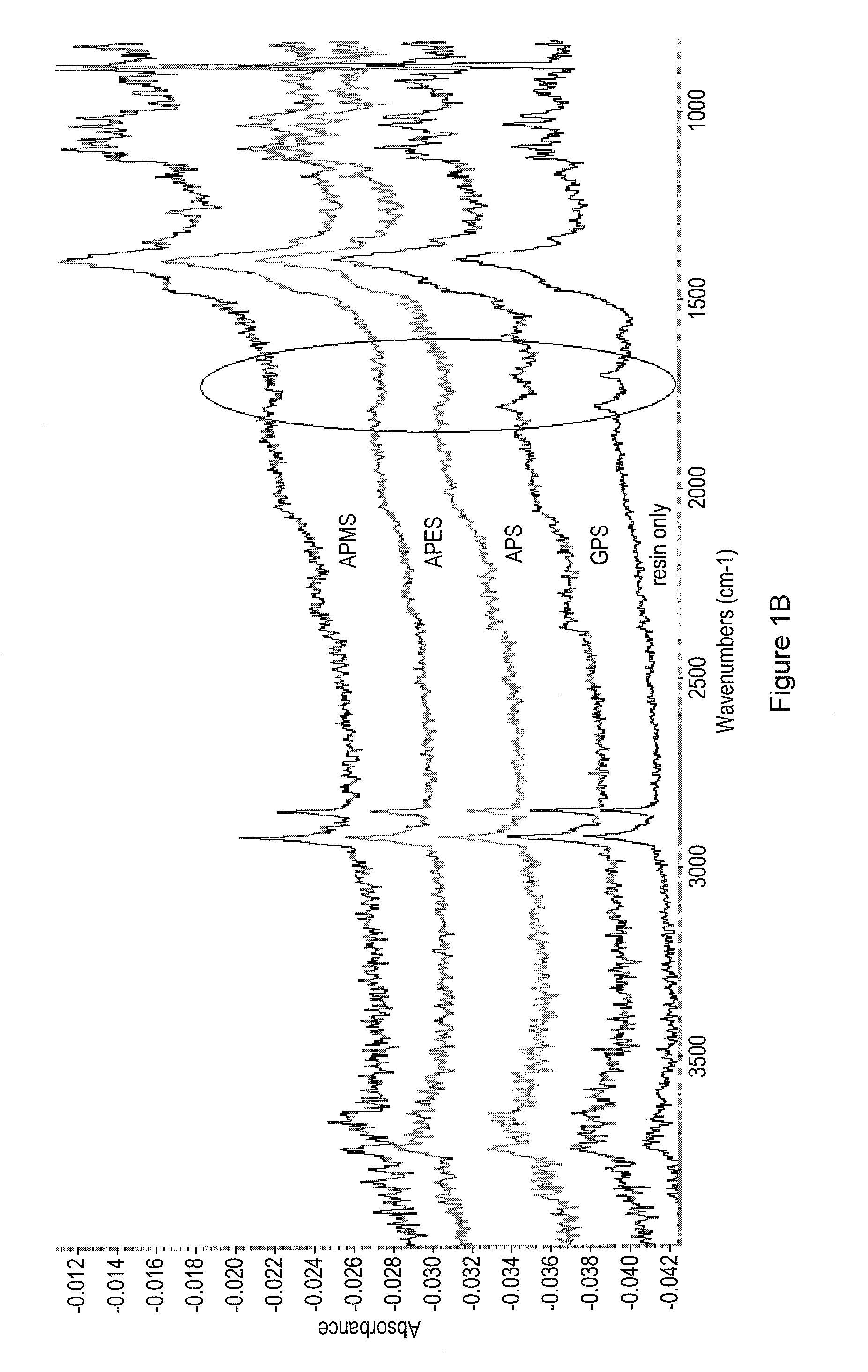Method for improving the durability of an ink printed on a substrate and substrate formed from such a method
a technology of ink printing and durability, which is applied in the direction of ion implantation coating, chemical vapor deposition coating, coating, etc., can solve the problems of pre-printing treatment not being able to protect the print surface from scratches, printing ink can be partially or completely torn out, and the effect of corona treatment can be poisonous ozon
- Summary
- Abstract
- Description
- Claims
- Application Information
AI Technical Summary
Problems solved by technology
Method used
Image
Examples
example 1
Suitability of Organofunctional Silanes
[0068]In studies on the effect of organofunctional silanes (OFS) on inks (especially LEP inks), the present inventors identified several OFS which can be classified as film formers. These film former organofunctional silanes (FFOFS) tend to solidify into a homogeneous film when applied onto solid surfaces such as polyester, aluminum foils, paper as well as on printed inks. The film formed is generally transparent and may provide protection to the surface applied onto especially printed inks. The transparent film formed may increases gloss. The present inventors developed a simple test to identify and characterize film forming organosilanes (see table 1). In the test a wire-rod (#0) was used to coat 0.025 ml of an organofunctional silane on LEP printed ink (Cyan E.I 4.5 printed on HP Indigo press 5000). Enhancement of solidification speed was obtained by placing the coated print on a hot surface (100° C.) for 1 minute. Heating of the sample was ...
example 2
Vapor Deposited Organosilane Layer
[0082]A stainless steel (or aluminum) bath (28 cm wide 42.5 cm long and 0.7 cm deep) containing the liquid OFS was heated to 130° C. A print mounted on a metal plate was placed 3.0 cm above the hot bath facing the OFS liquid. The coating thickness was controlled by the time the print was exposed to the hot OFS bath. The layer formed on the print was cured by heating the coated print on a hot plate (100° C.) for 1 min.
[0083]On the whole, it is shown in FIG. 3 and table 2 that APS coating protects the print from mechanical damage. Yet, the protection is less prominent on the non coated paper. FIG. 1 shows that the coat weight built on the non coated paper upon evaporation of APS is lower compared to the layer built on the coated papers. Note that in this procedure the layer formed by evaporation is heated for 1 min at 100° C. for enhanced curing. Some of the APS evaporates while curing the layer. It is reasonable to assume that the stronger the affini...
example 3
APS Coating on Offset Ink
[0084]Coating of offset prints with APS layer improved ink durability significantly (see table 3). APS has the lowest effect on the non-coated (Multifine) paper. The coat weight obtained after 2.5 min exposure to APS vapor (in the system described above) is significantly lower layer on coated papers. As a result no protection to the printed ink was achieved. See also similar behavior of printed LEP ink on Multifine paper in FIGS. 2 and 3 and table 2
TABLE 3Paper TypeCondatMultifineUPMnon damaged area %57.3183.4962.45after 100 strike no APSlayernon damaged area %90.1983.4484.35after 100 strikescoat weight of APS 2.5 min0.980.541.08evaporation gsm
PUM
| Property | Measurement | Unit |
|---|---|---|
| Temperature | aaaaa | aaaaa |
| Temperature | aaaaa | aaaaa |
| Temperature | aaaaa | aaaaa |
Abstract
- (a) providing a substrate having an ink printed thereon;
- (b) applying an organosilane to the ink to form a coating over the ink,
- wherein the organosilane is of the formula X—SiR1R2R3,
- wherein R1, R2 and R3 are all hydrolysable groups, and
- X comprises an a nucleophilic nitrogen-containing group which is covalently bonded to Si in X—SiR1R2R3 via a non-hydrolysable linker group; and
- (c) curing the organosilane. The present disclosure further describes a substrate having an ink printed thereon, wherein the ink has a coating thereon formed by applying an organosilane to the ink and curing the organosilane.
Description
Claims
Application Information
 Login to View More
Login to View More - R&D
- Intellectual Property
- Life Sciences
- Materials
- Tech Scout
- Unparalleled Data Quality
- Higher Quality Content
- 60% Fewer Hallucinations
Browse by: Latest US Patents, China's latest patents, Technical Efficacy Thesaurus, Application Domain, Technology Topic, Popular Technical Reports.
© 2025 PatSnap. All rights reserved.Legal|Privacy policy|Modern Slavery Act Transparency Statement|Sitemap|About US| Contact US: help@patsnap.com



